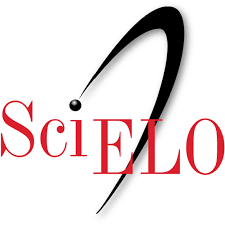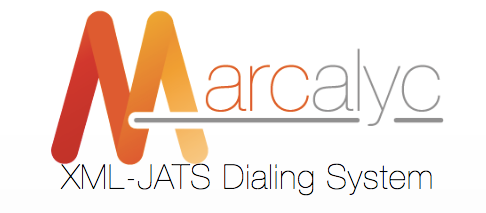
SciELO and Redalyc are two of the biggest databases of open access journals based in and around Latin America. Both of these databases were started to counter the low participation of Latin American scientists in established databases such as MEDLINE. (How to Get Your Articles Indexed in MedLine)
The scientific contribution of the Ibero-America region — which comprises of countries where Spanish and Portuguese are the predominant languages — is widely underestimated. Because many of their journals are published in Spanish or Portuguese, they struggle with reach and visibility. Redalyc and SciELO have remedied that to a great extent.
Getting indexed in these two databases, therefore, is a great way for a publisher from this region to increase their credibility and readership. However, there are some specific criteria that need to be met before a journal’s content is indexed and added to the respective database. Of these criteria, the one publishers struggle with the most is generating submission-ready XMLs compliant with Redalyc and SciELO requirements. In this blog post, we will cover the specific XML requirements both databases have and how to generate these quickly and without errors.
SUBMIT CONTENT TO SCIELO

SciELO has clearly defined the criteria journals need to fulfill to be indexed in its database. The criteria vary slightly for its individual country collections, but by and large, this document holds true: Criteria, policies, and procedures for the admission and permanence of scientific journals in the SciELO
SciELO’s XML Requirements (SciELO style JATS XML)
SciELO requires journal articles to be structured SciELO Style JATS XML files that meet SciELO Publishing Schema. This documentation details what the SciELO Style includes, and its different attributes and components: SciELO PS.
How to Generate SciELO Style JATS XML

SciSpace (Formerly Typeset) : SciSpace is an automated web platform for publishers to convert manuscripts into any end-use file format, such as JATS XML, HTML, PDF, ePUB, etc. within seconds. It supports 100% compliant conversions to specific requirements by databases like SciELO, PMC, DOAJ, MEDLINE, etc. SciSpace is the easiest, fastest and most accurate way to generate SciELO style JATS XML.

In-house or vendor generation: If you generate XML files in-house, you can also generate JATS XMLs that comply with SciELO’s requirements. If you have a third party vendor do it for you, you will need to check whether they can meet SciELO’s style guide. If the file is not 100% compliant, it will lead to a lot of unnecessary back and forth. You can use the Stylechecker tool to ensure that the XML generated conforms to the SciELO PS specifications.

SciELO Markup: This is a collection of macros for Microsoft Word for marking documents according to SciELO PS and for generating and validating SciELO style JATS XML. Read more about the Markup program and its capabilities.
SciELO XML package maker: This is a tool to generate XML packages for SciELO and PMC. It also runs some validity checks on the XML. Read the XML package maker documentation.
SUBMIT CONTENT TO REDALYC

Redalyc’s indexation criteria and evaluation process for journals is outlined in their Submit Your Journal page. Redalyc, like SciELO, has adopted the JATS XML standard for the content it adds to its database.
Redalyc’s XML Requirements
Unlike, SciELO, Redalyc does not have any additional specific style guidelines that journals need to meet. It accepts JATS XML as is, or even those generated for SciELO or PMC.
How to generate Redalyc XML
You can use any of these methods to generate Redalyc JATS XML:
SciSpace: Use this web platform to quickly and easily generate NISO compliant JATS XML of your journal’s content in seconds. SciSpace's automatically-generated XML file has rich metadata that helps you show up in more Redalyc searches and, consequently, increases your journal’s readership.
In-house or via a third party vendor: If you generate JATS XML for your journal already, then the same file can be submitted to Redalyc.

Marcalyc: This is a free JATS XML markup tool from Redalyc available for all journals that are indexed in the Redalyc system. A detailed user manual is available in Spanish.
GET INDEXED
If you’ve already been accepted into SciELO and Redalyc and you only struggled with generating compliant XMLs, we hope you are sorted now. For journals that are looking to get indexed in these two indices, do note that there are several other criteria your journals would need to fulfill.
The common requirements they share are no different from other popular indices. The criteria are stringent and aimed towards ensuring the indexation of only high-quality journals.
Journals must be open access to qualify for admission to both indexes, with SciELO specifying that journals should be Gold OA. Both require that journals should be at least 2 years old and mandate submission of journal websites that clearly define the journals’ missions, instructions to authors, OA policies and provides easy access to the articles. Peer review is mandatory, though SciELO has now started accepting pre-prints. You can read the latest updates to their admission policy in this blog: SciELO Indexing Criteria align with open science communication.
Quick links: SciELO criteria / Redalyc criteria
All the best!
Before you go
Talk to us to generate SciELO/ Redalyc XML compliant to your requirements
Appendix:
If you found the above article interesting, the following blogs might also interest you.
- How to Get Your Articles Indexed in PubMed: The Go-To Guide for Publishers
- How to Submit Metadata to Crossref: A Step by Step Guide
- PDF to JATS XML Conversion — Why it’s important for an Academic Publisher
- JATS XML: Everything a Publisher Needs to Know
- Top 5 Reference XML Generation For Academic Publishers







